Daniel Jiang
Bill
Internalizing Self-Consistency in Language Models: Multi-Agent Consensus Alignment
Sep 18, 2025Abstract:Language Models (LMs) are inconsistent reasoners, often generating contradictory responses to identical prompts. While inference-time methods can mitigate these inconsistencies, they fail to address the core problem: LMs struggle to reliably select reasoning pathways leading to consistent outcomes under exploratory sampling. To address this, we formalize self-consistency as an intrinsic property of well-aligned reasoning models and introduce Multi-Agent Consensus Alignment (MACA), a reinforcement learning framework that post-trains models to favor reasoning trajectories aligned with their internal consensus using majority/minority outcomes from multi-agent debate. These trajectories emerge from deliberative exchanges where agents ground reasoning in peer arguments, not just aggregation of independent attempts, creating richer consensus signals than single-round majority voting. MACA enables agents to teach themselves to be more decisive and concise, and better leverage peer insights in multi-agent settings without external supervision, driving substantial improvements across self-consistency (+27.6% on GSM8K), single-agent reasoning (+23.7% on MATH), sampling-based inference (+22.4% Pass@20 on MATH), and multi-agent ensemble decision-making (+42.7% on MathQA). These findings, coupled with strong generalization to unseen benchmarks (+16.3% on GPQA, +11.6% on CommonsenseQA), demonstrate robust self-alignment that more reliably unlocks latent reasoning potential of language models.
Carbon Aware Transformers Through Joint Model-Hardware Optimization
May 02, 2025Abstract:The rapid growth of machine learning (ML) systems necessitates a more comprehensive evaluation of their environmental impact, particularly their carbon footprint, which comprises operational carbon from training and inference execution and embodied carbon from hardware manufacturing and its entire life-cycle. Despite the increasing importance of embodied emissions, there is a lack of tools and frameworks to holistically quantify and optimize the total carbon footprint of ML systems. To address this, we propose CATransformers, a carbon-aware architecture search framework that enables sustainability-driven co-optimization of ML models and hardware architectures. By incorporating both operational and embodied carbon metrics into early design space exploration of domain-specific hardware accelerators, CATransformers demonstrates that optimizing for carbon yields design choices distinct from those optimized solely for latency or energy efficiency. We apply our framework to multi-modal CLIP-based models, producing CarbonCLIP, a family of CLIP models achieving up to 17% reduction in total carbon emissions while maintaining accuracy and latency compared to state-of-the-art edge small CLIP baselines. This work underscores the need for holistic optimization methods to design high-performance, environmentally sustainable AI systems.
Towards Understanding Camera Motions in Any Video
Apr 21, 2025Abstract:We introduce CameraBench, a large-scale dataset and benchmark designed to assess and improve camera motion understanding. CameraBench consists of ~3,000 diverse internet videos, annotated by experts through a rigorous multi-stage quality control process. One of our contributions is a taxonomy of camera motion primitives, designed in collaboration with cinematographers. We find, for example, that some motions like "follow" (or tracking) require understanding scene content like moving subjects. We conduct a large-scale human study to quantify human annotation performance, revealing that domain expertise and tutorial-based training can significantly enhance accuracy. For example, a novice may confuse zoom-in (a change of intrinsics) with translating forward (a change of extrinsics), but can be trained to differentiate the two. Using CameraBench, we evaluate Structure-from-Motion (SfM) and Video-Language Models (VLMs), finding that SfM models struggle to capture semantic primitives that depend on scene content, while VLMs struggle to capture geometric primitives that require precise estimation of trajectories. We then fine-tune a generative VLM on CameraBench to achieve the best of both worlds and showcase its applications, including motion-augmented captioning, video question answering, and video-text retrieval. We hope our taxonomy, benchmark, and tutorials will drive future efforts towards the ultimate goal of understanding camera motions in any video.
Aligned Multi Objective Optimization
Feb 19, 2025Abstract:To date, the multi-objective optimization literature has mainly focused on conflicting objectives, studying the Pareto front, or requiring users to balance tradeoffs. Yet, in machine learning practice, there are many scenarios where such conflict does not take place. Recent findings from multi-task learning, reinforcement learning, and LLMs training show that diverse related tasks can enhance performance across objectives simultaneously. Despite this evidence, such phenomenon has not been examined from an optimization perspective. This leads to a lack of generic gradient-based methods that can scale to scenarios with a large number of related objectives. To address this gap, we introduce the Aligned Multi-Objective Optimization framework, propose new algorithms for this setting, and provide theoretical guarantees of their superior performance compared to naive approaches.
On the Linear Speedup of Personalized Federated Reinforcement Learning with Shared Representations
Nov 22, 2024Abstract:Federated reinforcement learning (FedRL) enables multiple agents to collaboratively learn a policy without sharing their local trajectories collected during agent-environment interactions. However, in practice, the environments faced by different agents are often heterogeneous, leading to poor performance by the single policy learned by existing FedRL algorithms on individual agents. In this paper, we take a further step and introduce a \emph{personalized} FedRL framework (PFedRL) by taking advantage of possibly shared common structure among agents in heterogeneous environments. Specifically, we develop a class of PFedRL algorithms named PFedRL-Rep that learns (1) a shared feature representation collaboratively among all agents, and (2) an agent-specific weight vector personalized to its local environment. We analyze the convergence of PFedTD-Rep, a particular instance of the framework with temporal difference (TD) learning and linear representations. To the best of our knowledge, we are the first to prove a linear convergence speedup with respect to the number of agents in the PFedRL setting. To achieve this, we show that PFedTD-Rep is an example of the federated two-timescale stochastic approximation with Markovian noise. Experimental results demonstrate that PFedTD-Rep, along with an extension to the control setting based on deep Q-networks (DQN), not only improve learning in heterogeneous settings, but also provide better generalization to new environments.
NaturalBench: Evaluating Vision-Language Models on Natural Adversarial Samples
Oct 18, 2024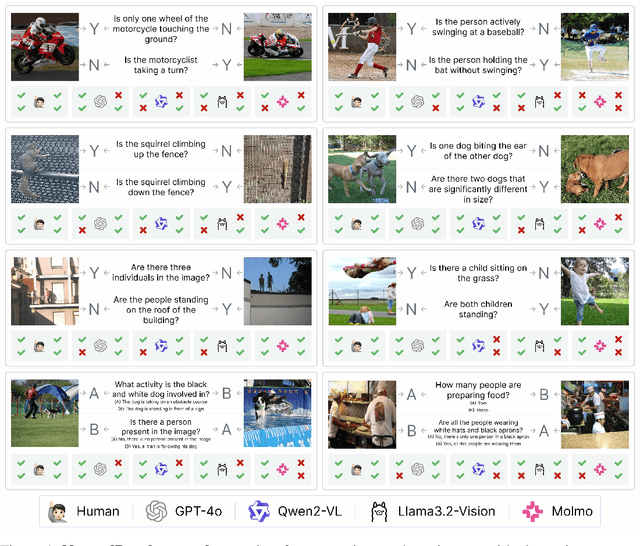
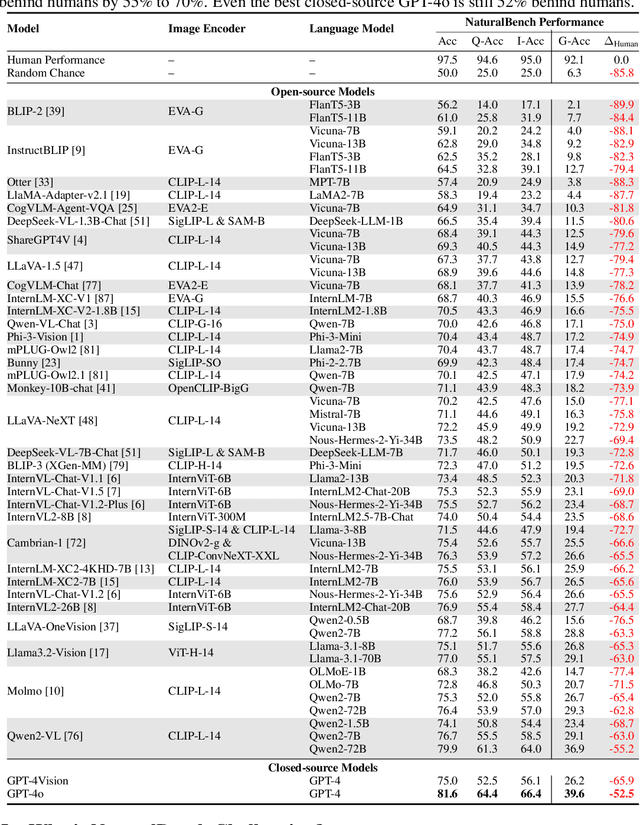
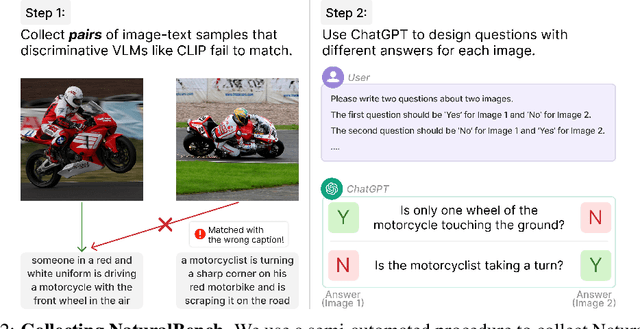

Abstract:Vision-language models (VLMs) have made significant progress in recent visual-question-answering (VQA) benchmarks that evaluate complex visio-linguistic reasoning. However, are these models truly effective? In this work, we show that VLMs still struggle with natural images and questions that humans can easily answer, which we term natural adversarial samples. We also find it surprisingly easy to generate these VQA samples from natural image-text corpora using off-the-shelf models like CLIP and ChatGPT. We propose a semi-automated approach to collect a new benchmark, NaturalBench, for reliably evaluating VLMs with 10,000 human-verified VQA samples. Crucially, we adopt a $\textbf{vision-centric}$ design by pairing each question with two images that yield different answers, preventing blind solutions from answering without using the images. This makes NaturalBench more challenging than previous benchmarks that can be solved with commonsense priors. We evaluate 53 state-of-the-art VLMs on NaturalBench, showing that models like LLaVA-OneVision, Cambrian-1, Llama3.2-Vision, Molmo, Qwen2-VL, and even GPT-4o lag 50%-70% behind human performance (over 90%). We analyze why NaturalBench is hard from two angles: (1) Compositionality: Solving NaturalBench requires diverse visio-linguistic skills, including understanding attribute bindings, object relationships, and advanced reasoning like logic and counting. To this end, unlike prior work that uses a single tag per sample, we tag each NaturalBench sample with 1 to 8 skill tags for fine-grained evaluation. (2) Biases: NaturalBench exposes severe biases in VLMs, as models often choose the same answer regardless of the image. Lastly, we apply our benchmark curation method to diverse data sources, including long captions (over 100 words) and non-English languages like Chinese and Hindi, highlighting its potential for dynamic evaluations of VLMs.
Pearl: A Production-ready Reinforcement Learning Agent
Dec 06, 2023



Abstract:Reinforcement Learning (RL) offers a versatile framework for achieving long-term goals. Its generality allows us to formalize a wide range of problems that real-world intelligent systems encounter, such as dealing with delayed rewards, handling partial observability, addressing the exploration and exploitation dilemma, utilizing offline data to improve online performance, and ensuring safety constraints are met. Despite considerable progress made by the RL research community in addressing these issues, existing open-source RL libraries tend to focus on a narrow portion of the RL solution pipeline, leaving other aspects largely unattended. This paper introduces Pearl, a Production-ready RL agent software package explicitly designed to embrace these challenges in a modular fashion. In addition to presenting preliminary benchmark results, this paper highlights Pearl's industry adoptions to demonstrate its readiness for production usage. Pearl is open sourced on Github at github.com/facebookresearch/pearl and its official website is located at pearlagent.github.io.
On Noisy Evaluation in Federated Hyperparameter Tuning
Jan 05, 2023Abstract:Hyperparameter tuning is critical to the success of federated learning applications. Unfortunately, appropriately selecting hyperparameters is challenging in federated networks. Issues of scale, privacy, and heterogeneity introduce noise in the tuning process and make it difficult to evaluate the performance of various hyperparameters. In this work, we perform the first systematic study on the effect of noisy evaluation in federated hyperparameter tuning. We first identify and rigorously explore key sources of noise, including client subsampling, data and systems heterogeneity, and data privacy. Surprisingly, our results indicate that even small amounts of noise can significantly impact tuning methods-reducing the performance of state-of-the-art approaches to that of naive baselines. To address noisy evaluation in such scenarios, we propose a simple and effective approach that leverages public proxy data to boost the evaluation signal. Our work establishes general challenges, baselines, and best practices for future work in federated hyperparameter tuning.
Distilling Heterogeneity: From Explanations of Heterogeneous Treatment Effect Models to Interpretable Policies
Nov 05, 2021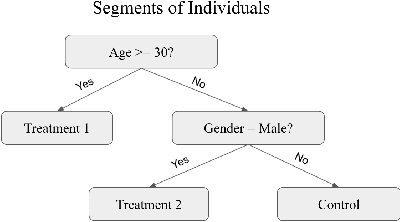
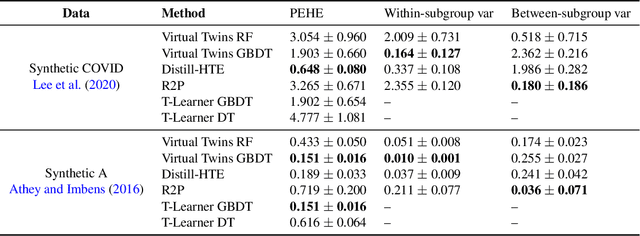
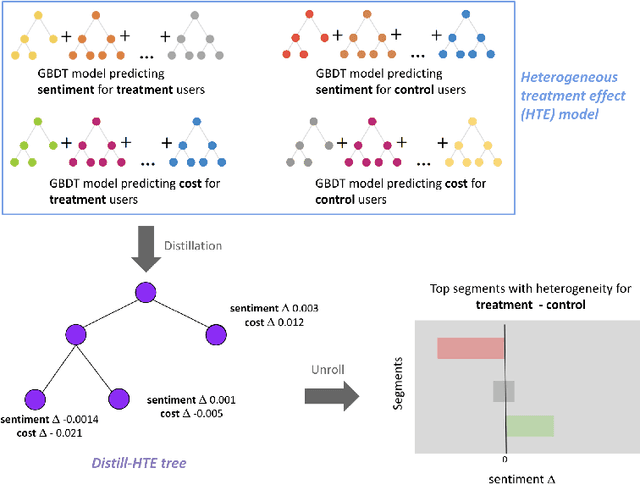
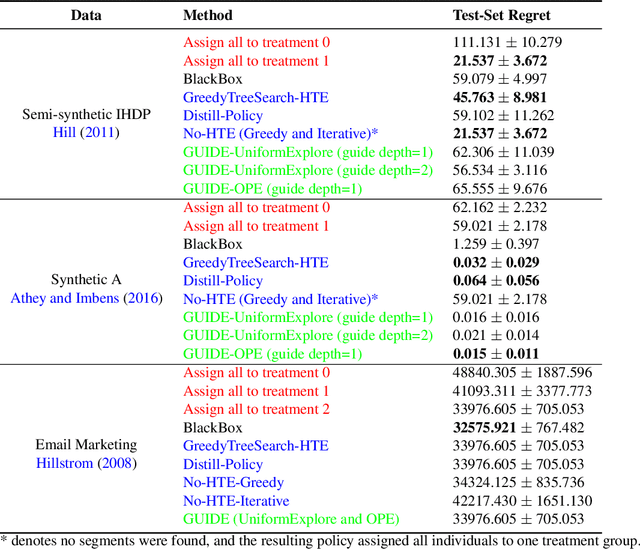
Abstract:Internet companies are increasingly using machine learning models to create personalized policies which assign, for each individual, the best predicted treatment for that individual. They are frequently derived from black-box heterogeneous treatment effect (HTE) models that predict individual-level treatment effects. In this paper, we focus on (1) learning explanations for HTE models; (2) learning interpretable policies that prescribe treatment assignments. We also propose guidance trees, an approach to ensemble multiple interpretable policies without the loss of interpretability. These rule-based interpretable policies are easy to deploy and avoid the need to maintain a HTE model in a production environment.
Extreme Multi-label Learning for Semantic Matching in Product Search
Jun 23, 2021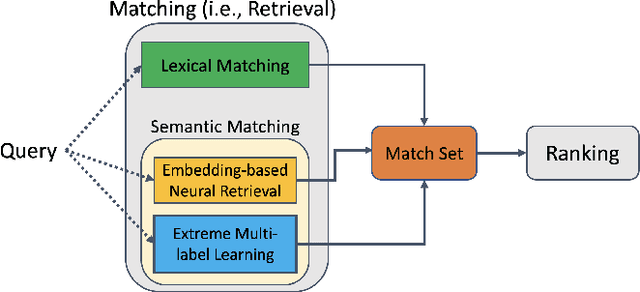

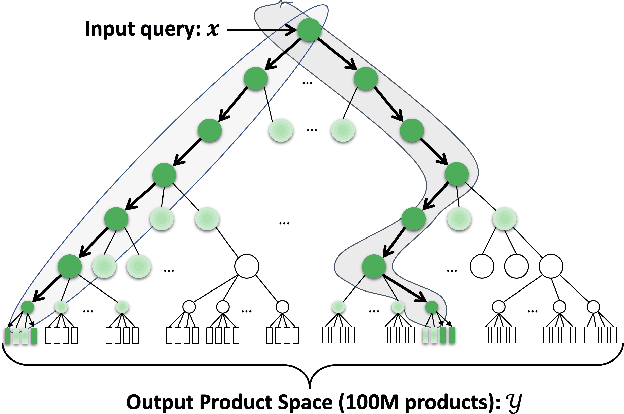

Abstract:We consider the problem of semantic matching in product search: given a customer query, retrieve all semantically related products from a huge catalog of size 100 million, or more. Because of large catalog spaces and real-time latency constraints, semantic matching algorithms not only desire high recall but also need to have low latency. Conventional lexical matching approaches (e.g., Okapi-BM25) exploit inverted indices to achieve fast inference time, but fail to capture behavioral signals between queries and products. In contrast, embedding-based models learn semantic representations from customer behavior data, but the performance is often limited by shallow neural encoders due to latency constraints. Semantic product search can be viewed as an eXtreme Multi-label Classification (XMC) problem, where customer queries are input instances and products are output labels. In this paper, we aim to improve semantic product search by using tree-based XMC models where inference time complexity is logarithmic in the number of products. We consider hierarchical linear models with n-gram features for fast real-time inference. Quantitatively, our method maintains a low latency of 1.25 milliseconds per query and achieves a 65% improvement of Recall@100 (60.9% v.s. 36.8%) over a competing embedding-based DSSM model. Our model is robust to weight pruning with varying thresholds, which can flexibly meet different system requirements for online deployments. Qualitatively, our method can retrieve products that are complementary to existing product search system and add diversity to the match set.
 Add to Chrome
Add to Chrome Add to Firefox
Add to Firefox Add to Edge
Add to Edge